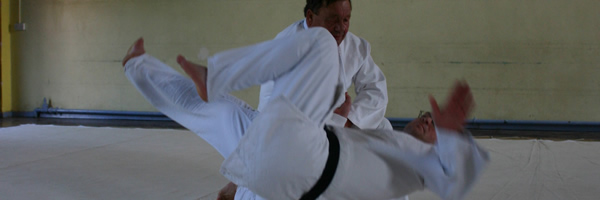
The term Judo has been around for a long time, as far back as the Edo period which ran from 1603 to 1867. The term Judo at this time had closer association with the Art of Jujutsu as opposed to the judo form we tend to associate with today. At the dawn of the Edo period of Japan, the most powerful man of this time was Tokugawa Ieyasu, he was determined to bring Japan under one rule and so with the subsequent defeat of all other clans, was appointed Shogun and established government in Edo (now Tokyo). Consequently the Tokugawa shoguns came to rule Japan for the next 250 years. The growth over this time was intensive and far reaching, to such an extent that peace was established which meant that the Samurai class was able to devote itself not only to the study of Martial Arts but to literature, philosophy and the Arts in general. Neo-Confucianism, was the strong philosophy of study during the Tokugawa period of Japan, it stressed the importance of strong morals, need of education and hierarchical order in both government and society. The study of Judo at this time, although Jujutsu in nature, is also reported as having a spiritual nature to it as well, perhaps not so surprising giving the changes that were talking place within Japanese society.
The late years of the Edo period would see the birth of the man who would establish the term Judo across the world, Jigoro Kano in 1860. He would grow up in a period that would see further rapid change and an end to isolation and a movement away from the importance of status held by the samurai class. It would be a time where most would turn their backs of the value of the traditional martial arts of Japan, indeed it would be a time when many Martial Art Ryu’s (schools) would lose popularity in favour of western ideals. Not so for Jigoro Kano. As a youth he was a boy of small stature and was often bullied by his peers, a typical story still found the world over. All this was set to change and Jigorio Kano would walk a path that would make is name famous for all time. He wanted more than anything to study the arts of Japan, namely that of jujutsu, something his father was to object to for some time, citing that he should spend his time studying something more worthwhile that would better help him in a developing Japan. Thankfully he was to get his way and was indeed to study with a number of revered masters of this time, some of whom due to hard times had to find other ways of making a living, using their ancient skills to heal in many cases. After studying various different styles Jigorio Kano began to formulate his own style which cumulated eventually in the formulation of his own school at the age of 22 and then the establishment of the Kodakan School.
The Kodakan style of Judo which he eventually perfected is far removed from that practiced and perceived by most people today. The modern form of Judo has a tendency to rely on strength and has a strong tendency to lean towards concentrating on competition. The outcome of this is to derogate the forms of Judo technique, the importance being placed on winning. The true emphasis of Judo is found in its Martial Arts origins and its philosophical roots. The whole point in its study is to encourage human development, good moral fortitude and understanding, principles that need to be encouraged by teachers, principles that go hand in hand with the actual techniques of Judo, the one should not be taught without the other as they are as one.
Judo taught within the TBCI fully upholds these original principles, but through following and forwarding the principles of KyuShinDo, a philosophy first outlined by Kenshiro Abbe Docho. The study of KyuShinDo is a medium for the true conduct of life, so the emphasis is on the students, through correct teaching of technique and through which they are encouraged to realise their full potential.
The nature of the Judo taught is Classical using competition only as a small measurement of the student’s progression, this allows the whole sphere of what Judo is about to be attained whilst keeping true to its original precepts and keeping the student safe. Only by doing this can Judo be the modern useful tool for the student to discover oneself and to progress on many levels, principles and ideals that can give one fortitude at all stages of life and human endeavour.
John Snaith Rokudan Kyoshi
The term Judo has been around for a long time, as far back as the Edo period which ran from 1603 to 1867. The term Judo at this time had closer association with the Art of Jujutsu as opposed to the judo form we tend to associate with today.
©Copyright Tokushima Budo Council International 2008
